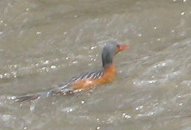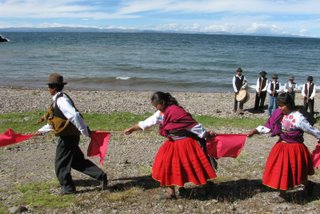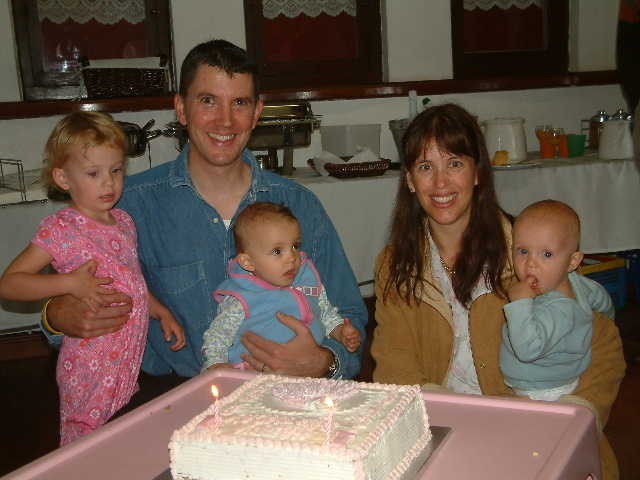We covered the 45km trek in 4 days, arriving at Machu Picchu at daybreak on the final day. It was an amazing (and pretty exhausting!) experience and one we will certainly never forget.
Having a good group always enhances one´s hiking experience and we were lucky to have a great one. From left: Claudio, Christy, Toni, Paul, Louis, Holly, me, Ally, Mami, Erik and Mark.
I got to share my photography passion with Mami, a petite bundle of sunshine energy from Japan who was even more passionate about photography than me. Her name was pronouced "mummy" and it felt pretty strange when we lost her on one occasion and all shouted "Mummy, mummy, where are you!" We sure got some strange looks from other groups!
I also got to share some very inspiring chats with Eric, a wonderful Canadian who is a member of the Anthony Robins foundation - a motivational guru who I really respect.
The mountainous scenery on the hike was spectacular, especially when the clouds lifted to reveal snow capped mountains and the sun reflected off the red granite. April is the end of the rainy season in the area, so the slopes were still lush with trees and grass.
We passed through mountain rain forests where tree trunks were covered in hanging moss and higher up we could see the most magnificent valleys with soaring cliff edged mountains.
The second day of the hike was the toughest by far when we climbed 1300 metres (a non stop uphill hike of 4 hours) to ascend a 4200 metre pass - the "challenge" section in the graph below! We were pretty ecstatic to reach the top. Ally was an absolute Trojan and was the 4th person in our group to reach the summit. We then had to descend 400 metres before climbing yet another pass. Needless to say, we slept very well that night.
Given the big climbs, we felt very lucky to have light packs only. All the food and tents were carried by our personal "chaskis" or porters. There were more chaskis than there were people in our group!
All the chaskis were laden under enormous weights (apparently their loads are not allowed to exceed 25kg but I am sure that they must have weighed more) and were expected to charge on ahead of us up the mountain so that by the time we reached our lunch and evening sports, all our tents were already pitched and our food was ready to be served!
Not that this deterred the chaskis at all. In fact they took a lot of pride in what ever they did whether it was running up steep mountain steps, laying the table or setting up our tents.
All in all, this meant that we were totally spoiled! We ate our dinners with metal crockery on tables and chairs that were set up in a special dining tent. And the food was absolutely amazing consisting of multiple courses and laid out with tremendous care. What an enormous contrast from our Wit Els hike in Cape Town in December where we had to do it all ourselves and survived on burnt noodles and tuna for 5 days!
What made the Inca trail particularly special for me was that it followed the original ancient Inca road. The road was paved with enormous rocks - how the Incas found the energy to manually lay it all I will never know.
There were also countless steps along the way. At one stage we walked down 2300 steps in about an hour to get to lunch. We all collapsed at the bottom with legs too shaky to stand on.
At one point, the Inca road passed through a 20 metre tunnel that the Incas dug through solid rock without modern tools and equipment. Amazing!
Along the hike, we also saw many Inca ruins. The reason they are so well preserved is that the Spanish did not know about the existence of the Inca trail (or Maccu Picchu) so did not have a chance to loot and pillage it. Having said that, the the American who “discovered” it for westerners (in 1911) managed to pillage all the mummies along the way which now reside in Yale university. Thankfully it wasn´t the Brits who discovered it or much of Machu Picchu would probably now lie in the British museum (like the Greek Parthanon!).
As usual I had my eyes peeled for feathered rarities and got to see some crackers. I was most excited about seeing the torrent duck (bottom photo) which somehow manages to swim and feed in even the strongest rapids. It was an extraordinary site to behold, though I only managed to photograph it from quite a distance. The trojan sighting (bottom right) also caused much excitement. Thanks to Mami for spotting it!
We saw some beautiful flowers along the way. Over 250 species of orchid have been counted along the Inca trail.
Due to a landslide, we could not finish the Inca trail through the Inca sun gate as is tradition. At the end of the 3rd day, we had to hike along the rail way track to the town of Aguas Clientes ("Hot Water"– named due to the hot springs).
We spent the night on the floor of a restaurant which is an experience we hope not to repeat in a while. Our restaurant was on the main road and we were in bed by 10pm as we had a 3:30am get up. But sleeping was out of the question as there was an extremely enthusiastic Bingo game on the go and we could hear all the numbers being screamed out (one way to improve your Spanish "numbers" vocab!)
To add insult to injury, we had bored teenage boys looking into our restaurant window calling gringo, gringo!! We were all rather grumpy the next morning added to which we ran late so we had to run up the steep hill to get to the entrance of Machu Picchu before the buses arrived with the hordes of people.
Some more people shots along the way
Next stop: Machu Picchu



































































